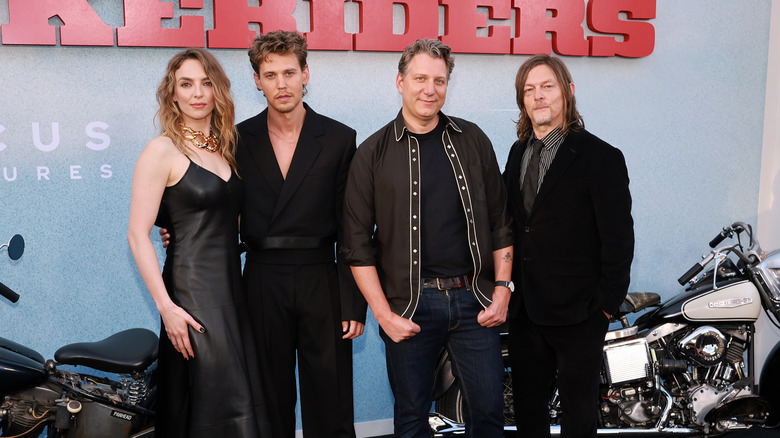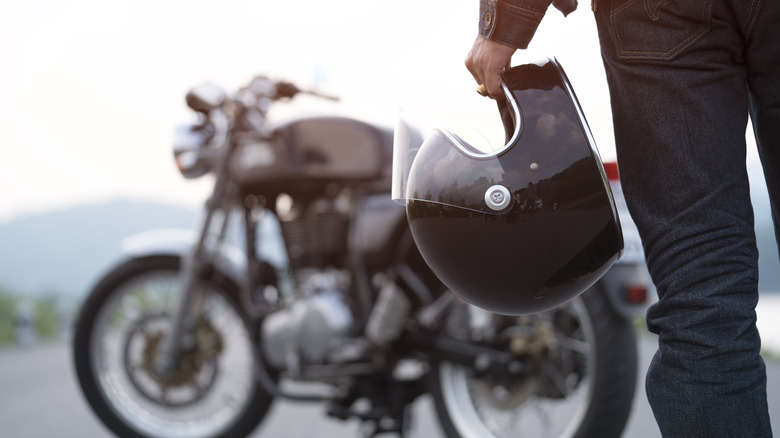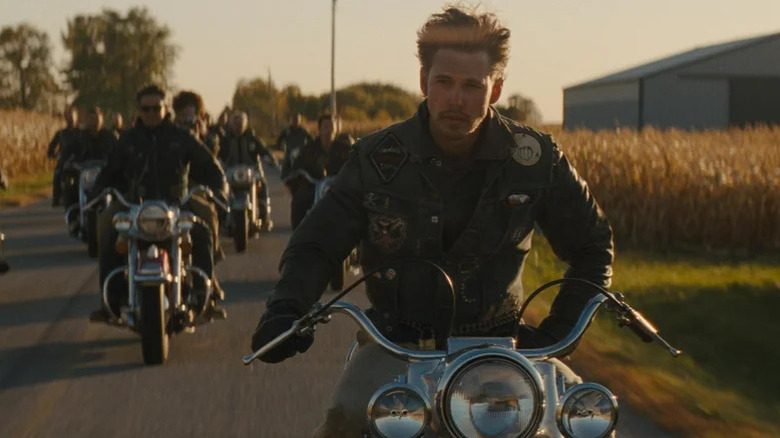The Real-Life Motorcycle Club That Inspired The Movie Bikeriders
Let's face it, motorcycles have — and always will have — an inherent "cool" factor in pop culture. The aesthetics combined with the outlaw nature and freedom-seeking of bike culture leads to a certain lore and appreciation in the zeitgeist. Motorcycle riders can come across as intimidating, especially considering the connotation of massive biker gangs like the Hells Angels, where a rider's disposition, by virtue of riding an unprotected bike, is one of risk-taking and toughness.
Then there are the more tame aspects of the culture as seen in genuine, fun-loving, and community-focused motorcycle clubs. These clubs espouse a strong sense of socializing through camaraderie and a shared hobby, further evidenced in the tinkering and modding side of things. Customizing bikes and "talking shop" is part of the appeal, especially pre-Internet, serving as a database for esoteric parts and general know-how.
The 2023 American film, "The Bikeriders," starring Tom Hardy and Austin Butler, depicts a Midwestern motorcycle club, starting as a gathering place for rough-around-the-edges enthusiasts and evolving into a full-blown criminal organization. The gang and story in question are based on the real-life events surrounding The Outlaws, designated an "outlaw gang" by the FBI. The filmmakers took inspiration from Danny Lyon's 1968 photo book called "Beyond the Law," which also influenced another film of the same name, starring Charlie Sheen. The backstory that inspired "The Bikeriders" sheds light on the 20th-century American motorcycle culture in its rawest form.
The Chicago Outlaws and Danny Lyon's eye
In the canon of classic American motorcycle cinema, there are many classics to consider, including "Easy Rider," "The Wild One," and "The Wild Angels." It's no secret that motorcycle chases and their general dedications in film are exciting to watch, but when they're used as a story device — especially one that actually happened — the movies are richer for it. Thanks to Danny Lyon's focus, we have an archive and depiction of the Chicago Outlaws Motorcycle Club, where, from 1963 to 1967, Lyon documented their moves. He was able to do so as he himself became a full-fledged member of the club, riding his own Triumph bike alongside the group.
Such intimate and unvarnished access to the day-to-day lives of the Outlaws brought this fringe culture into focus for mainstream audiences, where some of the gang's behavior and language was used to also inspire the now iconic 1969 motorcycle film, "Easy Rider." It's this type of close encounter with the bikers that afforded Lyon, and ultimately, the writers of "The Bikeriders," an authoritative and authentic account to base the storytelling on. With a solid historical account to back up the narrative, the movie was able to captivate a wide range of audiences — from actual bikers to the general public — spanning generations.
Authenticity versus entertainment
The film's director, Jeff Nichols, started adapting aspects of Lyon's book back in 2003, where he attempted to carve out the framework of the plot. But due to a lack of original riders available for reference, Nichols was led down a path of dramatization, taking some of the real-life events depicted in "Beyond the Law," and fictionalizing plot points where needed. To balance the narrative, Nichols opted to create "The Vandals," a fictional bike club, rather than directly referring to the real-life Chicago Outlaws.
In turn, this gave the director the freedom to mold the story in his favor, without risking offending or misrepresenting historical facts of the actual bike gang. However, many of the main characters were based on actual people to ground the story and its central figures in a lived experience. Kathy Bauer has an integral role in the film. Her persona was inspired by genuine recorded interviews with Lyon, serving as the fodder for a romantic subplot with Benny.
Played by Austin Butler, Benny's character becomes involved with Kathy in a whirlwind fling, and they were married after only weeks of dating. Johnny (Tom Hardy), the founder of the Vandals, was inspired by Johnny Davis, who was the real president of the Outlaws. With such talent and a truly captivating story to draw from, combined with the allure of 20th-century motorcycle culture, we have a wildly entertaining motion picture in "The Bikeriders."


